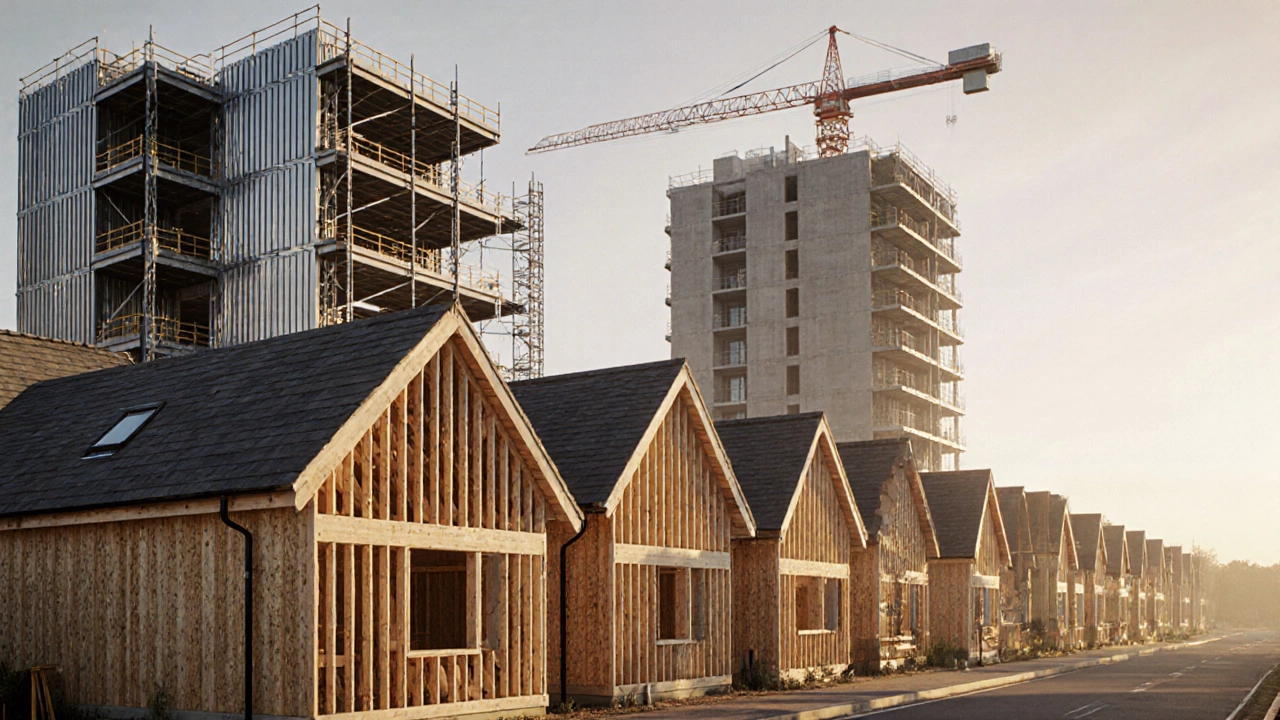What Materials Are Used in Modern New Builds?
Explore the most common materials used in modern new builds, from timber frames to low‑carbon concrete, with pros, cons, costs and a handy comparison chart.
When we talk about modern construction, the current approach to building structures using updated materials, methods, and regulations to improve safety, efficiency, and durability. Also known as contemporary construction, it’s not just about glass towers and open floor plans—it’s about how we anchor buildings, what we build them with, and who’s responsible when things go wrong. You can’t understand modern construction without looking at the commercial construction, projects built for business use like offices, retail spaces, and warehouses, governed by stricter codes than homes behind most big projects. These aren’t just bigger houses—they’re engineered for heavy use, long lifespans, and complex systems like HVAC, fire suppression, and load-bearing steel frames. And when you mix in building codes, the legal rules that dictate how structures are designed and built to protect public safety, you get a system where even small changes—like adding a mezzanine or switching from wood to steel—require permits, inspections, and sometimes full structural reviews.
Modern construction also means facing realities like foundation repair, fixing structural issues in a building’s base that can cause cracks, tilting, or uneven floors before they turn into million-dollar problems. A lot of the posts here focus on this because foundation issues don’t care if your building is new or old. A 2025 high-rise and a 1980s apartment both settle the same way if the soil underneath isn’t stable. That’s why knowing the difference between normal settling and a bad crack matters. And it’s not just about fixing things—it’s about choosing the right construction materials, the physical components used to build structures, like galvanized wire, concrete, steel, and treated lumber. Galvanized wire, for example, isn’t just for fencing. It’s used in reinforcing concrete, tying rebar, and holding insulation in place. In modern builds, even the smallest wire can affect structural integrity.
What you’ll find below isn’t a list of trends—it’s a real-world look at how modern construction works on the ground. From why you can’t just slap wood on top of steel without fire barriers, to how much foundation repair actually costs in 2025, to which labor jobs pay the most in this field. These aren’t theory pieces. They’re answers from people who’ve seen cracked slabs, failed permits, and overbudget remodels. Whether you’re a homeowner worried about your foundation, a contractor checking codes, or just curious how buildings stay up, this collection cuts through the noise. No fluff. Just what you need to know before you build, buy, or fix something.

13 October
Explore the most common materials used in modern new builds, from timber frames to low‑carbon concrete, with pros, cons, costs and a handy comparison chart.

27 July
Discover if new builds stand the test of time in 2025 with facts, real examples, durability tips, and what buyers should check before moving in.